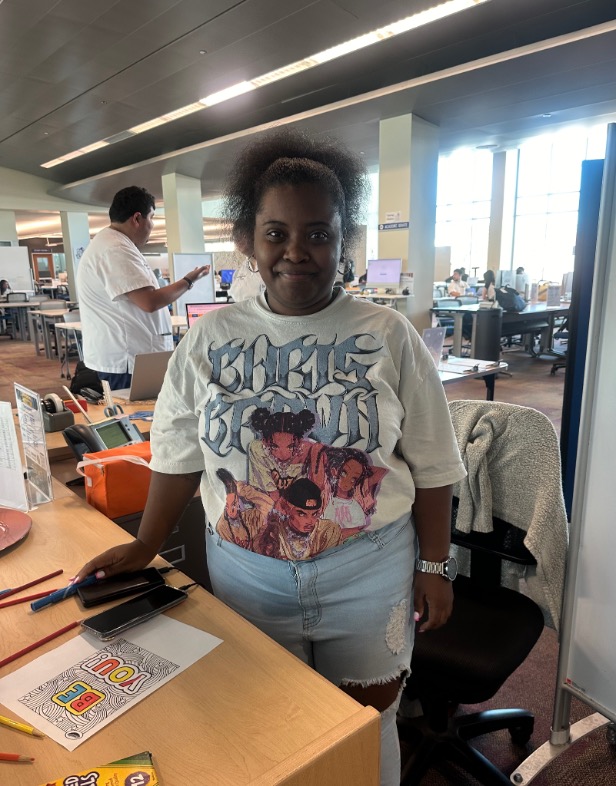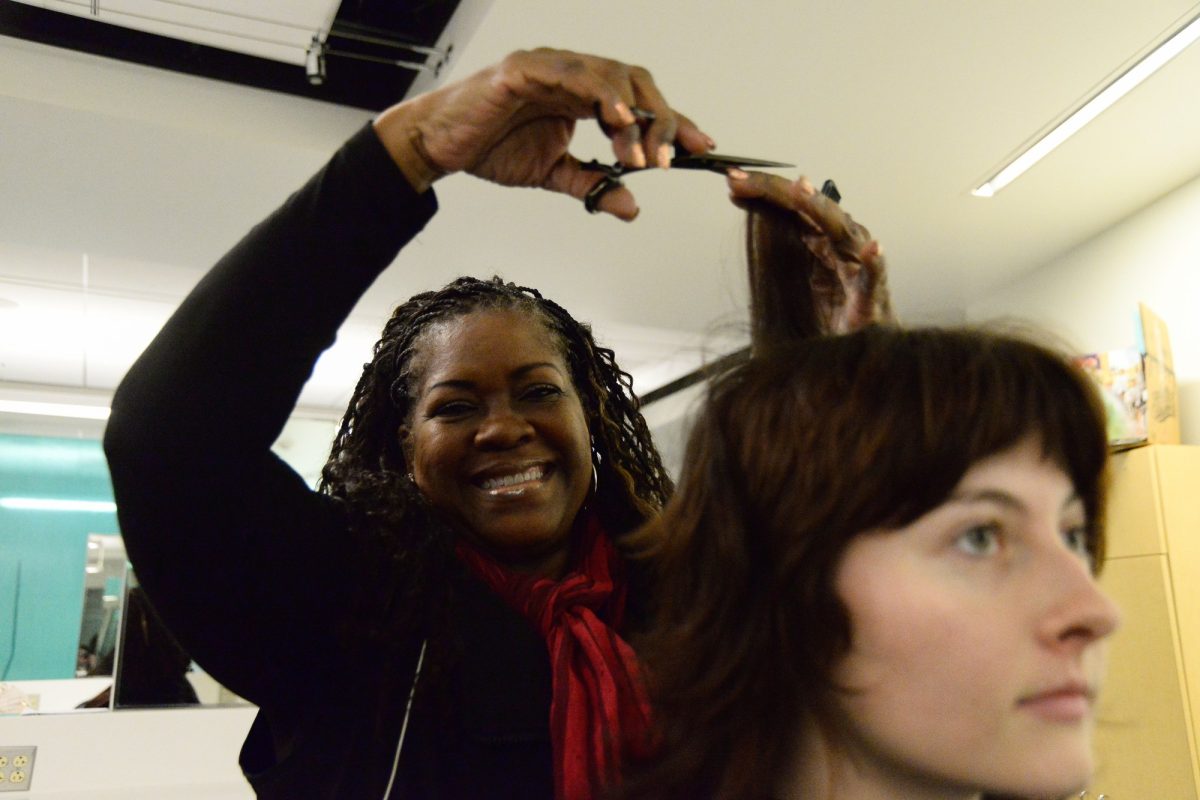You want one.
You want one when you wake up, even before your eyes snap open in the morning.
You want one with your first cup of coffee.
You want another one between classes later in the day.
You feel this craving until bedtime, when you smoke your last one.
If you’re a smoker, you know what I’m talking about.
Cigarettes. Throughout the day you find yourself, wanting, needing, smoking them.
You want to take that nicely rolled cigarette out of its fresh cellophane pack and put it to your lips.
You take a drag and inhale deeply. You feel the smoke curl into your mouth and sweep down your throat. You feel it catch high in your chest.
Instantly, you feel the relief and the satisfaction – a feeling of momentary lightheadedness, then that liberating sensation.
When you smoke, the nicotine is absorbed quickly into the bloodstream and travels to the brain, resulting in addiction in a way the Surgeon General says is similar to heroin and cocaine addiction.
Students enjoy smoke break
Standing outside the Math Building, two students were smoking to relax before their next class.
With gathering rain clouds turning the sky inky black, it provided a dramatic backdrop as Karin Markus, business major, and Candice Sorge, liberal arts major, discussed their nicotine habit.
Markus and Sorge are in their early 20s and have smoked since they were about 13 years old.
“I do think about the health risks,” Sorge said, who took a final puff and washed it down with her soft drink. “I have my smoke and I think, ‘I’m going to die.’ But I feel stress and it keeps me smoking.”
“You get hooked,” Markus said, nervously stubbing out her butt. “It started as a social thing. All my friends did it, and it’s something you do from then on.”
When people are young, they suffer from something called the ‘Invincibility Fable.’ Young people don’t think anything could ever happen to them Sorge said.
But not everyone feels the need to smoke before class.
Michael Higham, general science major, sat outside his science class, calmly awaiting the evening’s lecture.
Higham said he tried smoking once, but had no desire to continue.
“It’s probably because of health reasons,” Higham said. “I felt congested in my chest. I have also been very athletic all my life and smoking wasn’t something I wanted to do.”
Hazardous to your health
Every year, cigarette smoking kills more than 276,000 men and 142,000 women.
Smoking increases the risk of death from lung cancer 22 times for men and 12 times for women; it increases the risk of death from emphysema nearly 10 times for both men and women.
With more than 60 carcinogens in the tobacco students smoke, cigarette smoking alone is directly responsible for at least one-third of all cancer deaths in the U.S.
Many studies have also shown cigarette smoking is a major cause of coronary heart disease, which leads to heart attacks. Cigarette smokers also have a higher risk of developing fatty buildups in arteries, chronic obstructive pulmonary problems and getting strokes say statistics from the Centers for Disease Control and Prevention, National Cancer Institute and American Heart Association.
National Smokeout Day
Today is National Smokeout Day, a day when health officials urge people not to smoke for at least 24 hours.
Dr. George Thompson, medical director of the Health Center, said the center will have a table in front of the office today, with staff members helping people make the choice to quit.
“Education and support are two major factors in quitting,” Thompson said. “We want people to know about alternatives, because quitting smoking, like any addiction, is difficult and it’s easy to go backward.”
A pulmonary specialist, Thompson said it’s obviously better to quit before a serious disease appears.
“Cigarette smoking is one of the greatest causes of death with the onset of emphysema and lung cancer,” Thompson said. “But unfortunately, when individuals start smoking, they don’t really know what happens. It takes 20 years for smoking’s effects to appear. But once you get emphysema, it’s a downhill course because it’s not reversible.”
Yet it doesn’t have to happen.
“It’s preventable, if people don’t start at an early age or if they quit in time,” Thompson said. “It’s a lot easier to practice prevention than to cure the disease.”
Easy to start, hard to quit
It’s true that quitting for good can be quite difficult.
Theresa Coleman, computer engineering major, said she once quit for eight years, then started smoking again in the Army.
“I was hanging out with friends, drinking and shooting pool and I started smoking again,” Coleman said. “There was some peer pressure, but I knew what smoking was like and I wanted to do it again.”
Coleman wants to quit and plans on quitting some day.
“I’m down to eight or ten cigarettes a day now,” Coleman said. “I go weekends without smoking because I’m with my boyfriend. But then I sink back. I plan to quit some day, but right now I’m just procrastinating.”
Some students, however, have never tried tobacco and probably never will.
“I have never smoked because I don’t want to be like everybody else,” Erika Johnson, music performance major, said. “I took into consideration the effects on health – heart disease, lung cancer, throat cancer. Anything hazardous to my health isn’t something I care to do.”
History of the Great American Smokeout Day
Tobacco use represents the single most cause of preventable death among Americans. In the United States, an estimated 25.0 million men (25.7 percent) and 22.6 million women (21.5 percent) are smokers.
Since 1977, the American Cancer Society has designated the third Thursday in November as the Great American Smokeout day. This year marks the 26th anniversary of this event.
This widely successful event is held in support of the efforts of smoked and smokeless tobacco users to abstain for 24 hours.
Americans join together in an effort to educate children about the dangers of tobacco use, both smokers and nonsmokers take this opportunity to begin healthier lifestyles that set a positive example for young people.



![Universal Pictures "Wicked," directed by Jon M. Chu, will be playing in theaters worldwide on Nov. 22. (Elliott Bullock II [The Union])](https://eccunion.com/wp-content/uploads/2024/11/wicked-poster-from-elliott-bullock-ii-1200x540.jpg)




